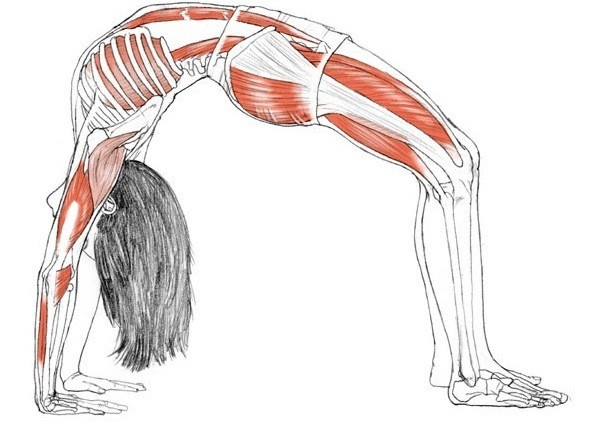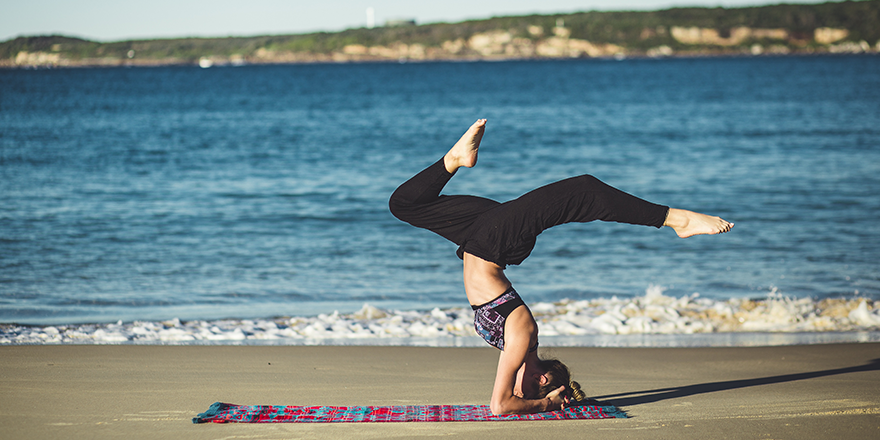
Hot yoga is a type of exercise that is performed in extreme heat. It results in heavy sweating. This name means that the practitioner is required to use more of their body heat. These methods aim to replicate the conditions that yoga practitioners in India experienced. These are the tips you need to know how to do a particular pose. Continue reading to find out more about yoga hot. This article will describe the benefits and differences of hot yoga.
Hot yoga increases flexibility and strength while eliminating toxins. This type of exercise helps you move more efficiently and mindfully. You will also get a better nights sleep, more time to think about your life and a chance to clear your head. Taking a hot yoga class is the perfect way to start your day! Here are three benefits to yoga hot. Let's take a look at each of them one by one.
First, you need to make sure to drink plenty of water before and after your yoga practice. Not only will it keep you hydrated, but it will also support your urinary system. Water is also essential for hundreds of other bodily functions. Water should be taken at least two hours prior to class in small quantities. You should also avoid eating anything prior to a hot yoga class. You can eat small snacks before you attend a hot class, but avoid large meals two hours before.

Another benefit of yoga hot is the increased flexibility. Many people who have tried it find it more fun and effective than the cold version. It is important to know the risks. It is true that intense hot yoga classes can result in injury. However, it is still safe. Remember that your body is the most important aspect of your practice. Make sure you practice safely. Be sure to inhale deeply. You shouldn't overdo this.
You can do hot yoga classes best if you drink lots of water. You need to drink lots of water because hot classes can be very intense. Then, you'll be ready for the workout! Whether you're doing poses with your hands or feet, your body needs the proper oxygen to remain in good condition. In other words: The more you practice, your body will have more energy.
Hot yoga is not easy, but it can be very good for your health. Listen to your instructor and be aware of what your body needs. It will let you know when you should stop to hydrate. Avoid this type exercise if your baby is in labor. Heat can cause pregnancy to be affected. It is important to consult a physician before starting a yoga program. Avoid taking any medication unless your doctor has recommended it.
Although hot yoga may sound appealing, you must follow the instructions provided by your teacher. Your body's temperature is also an important consideration. Although most practitioners will feel fine, there are some who experience discomfort from hot yoga. To avoid heat stroke, it's best that the room temperature is kept at a comfortable level. If you are not comfortable with heat, it can cause discomfort.

Hot yoga can help you find balance. After a class, you'll feel more flexible and stronger. However, it is important to take some time off. You should drink lots of water if you feel dizzy or fatigued after hot yoga classes. After the class, it is a good idea to incorporate the exercise into your day. If you feel uneasy about the heat, you can try a different style of hot yoga.
The main benefit to yoga hot is that you burn calories. While artificial heat does not cause injuries, it can improve your flexibility and enable you to perform more advanced postures. The heat helps you to relax which is crucial if your goal is to lose weight. A 90-minute hot yoga session can be very beneficial in losing weight. The benefits of hot yoga include lower stress and more energy. It's great for your fitness and health.
FAQ
How fast can I transform myself?
Your mindset must be changed. First, you must decide to make a change.
Once you have decided you want to make changes, you will need to commit to your fitness goals at least for 3 months.
The next step is to find the right program for you.
It is important to have realistic expectations. Don't spend your hard earned money on a gym membership if you don't have the motivation to work hard.
Instead, spend your free time exercising outdoors.
Spend an hour walking around the block every day and you will burn enough calories to lose 1 lb each week.
Now that you have an idea of what you want, start planning how to arrange your life to follow this plan.
This includes scheduling a time to exercise each morning before you leave for work and taking breaks throughout the day so that you can move.
Reward yourself for reaching milestones. You can buy accessories and clothes that reflect your success.
Which workout is best to build muscle?
Two main types of exercises are required for building muscle mass. These are called compound movements and isolation. While compound movements focus on a single muscle, isolation exercises are focused on specific muscles.
Choose exercises that test all your major muscle groups to improve your workouts. This ensures you're always pushing yourself during your workouts.
MyFitnessPal, an app that tracks your actions, can be used to help you keep track. It allows you to log everything from calories burned to weight lifting. You can also create customized meal plans based upon your goals.
Cardio Exercise: Good or Bad for Your Health?
Cardiovascular exercise offers many benefits. It improves blood circulation, strengthens your heart muscle, increases stamina, helps you lose weight, and gives you energy.
Cardiovascular exercise includes running, biking, hiking, swimming, tennis, basketball, soccer, volleyball, football, etc.
Cardio exercises should not be done at high intensity. This could result in injury.
You should only perform the cardiovascular exercise if you are feeling well.
Never push yourself past your limits. In this way, you may injure or even kill yourself.
When you engage in cardiovascular exercise, it is best to warm up first. Gradually increase the intensity.
You must always listen to what your body is telling you. If you feel pain, stop doing cardio exercise immediately.
It is also recommended to take some time off after a cardiovascular exercise. This gives your muscles the chance to heal.
Cardiovascular exercise is an important part of losing weight.
This is the best way to lose weight and belly fat.
Is it true to say that protein overeating can lead to kidney stones?
Protein is important for maintaining healthy bones and tissue. However, too much protein can result in calcium excretion through the urine. This can cause kidney stones.
It's important to note that not everyone gets kidney stones after eating more than 2 grams of protein per kilogram (2.2 pounds) of body weight. It is possible to eat high levels of protein without developing kidney stones.
Your sodium intake can prevent kidney stone formation. Sodium regulates the water balance of the kidneys. High levels of sodium are linked to a greater risk of developing renal stones.
You may also want to reduce your protein intake in the event of kidney stones. Protein provides about half of the daily caloric needs for most adults. A reduction in protein intake will likely result in weight loss.
If you do decide to eat more protein, don't go overboard. Try to eat less than 20% protein in total calories.
Statistics
- Cardmembers earn 5% Back at Amazon.com with a Prime Credit Card. (amazon.com)
- Candidates and applicants must pass all four tests at 70% (minimum level) to graduate from Basic Deputy U.S. Marshal (BDUSM) Training. (usmarshals.gov)
- The PRS enabled risk stratification for overall prostate cancer and lethal disease with a four-fold difference between men in the highest and lowest quartiles (HR, 4.32; 95% confidence interval [CI], 3.16-5.89). (pubmed.ncbi.nlm.nih.gov)
- Are You One of the 20% of Guys (mh.co.za)
- By John Thompson Take a whopping 38% off a set of PowerBlock Pros. (menshealth.com)
External Links
How To
How can a man be fit in only 30 days?
It is best to break down difficult goals in small, manageable steps.
You need to make sure you are working towards the goal each day. This could be as simple as doing 10 pushups and running for 3km.
This will ensure that you see positive results if you practice it consistently over time.
Here, consistency is the key. It is important to persevere until you succeed.
What is the difference in Aerobic Fitness and Anaerobic Fitness
Anaerobic fitness describes the body's ability not to use oxygen to perform intense physical tasks. Anaerobic pathways are used when there is intense exercise to provide sufficient energy. Anaerobic pathways include glycolysis (creatine phosphate), the phosphagen and lactic acid.
Aerobic fitness, however, refers to the continuous practice of low-intensity aerobic exercise. While performing aerobic exercises, oxygen is used as the primary source of fuel for the cells. In other terms, the aerobic pathway has more energy that the anaerobic.
To run a marathon you need to first increase your aerobic capacity. If you only focus on building up your anaerobic capacity, you won't be able to finish the race.
Aerobic fitness is also referred to as cardiovascular fitness. The two most common methods of measuring cardiovascular fitness are VO2 max testing and step tests.
Test VO2 Max
The body's maximum oxygen consumption during exercise is called the VO2 Max. This test measures how much oxygen the body can use while exercising.
This test measures cardiovascular fitness in a way that is most accurate. It requires expensive equipment and highly-trained professionals to administer.
Step Tests
Step tests are an easy but powerful way to determine your cardiovascular fitness. You will be asked to walk, jog or run for a specific time on a track. This is based on your age or weight.
These tests are inexpensive, easy to conduct, and can be done almost anywhere. For example, you could walk on a treadmill 20 minutes and then stop. Throughout the session your heart rate should not exceed a specified range.
This is the "Bruce Protocol". Bruce, himself a runner developed this protocol when he realized his heart rate didn't rise when he ran long distances.